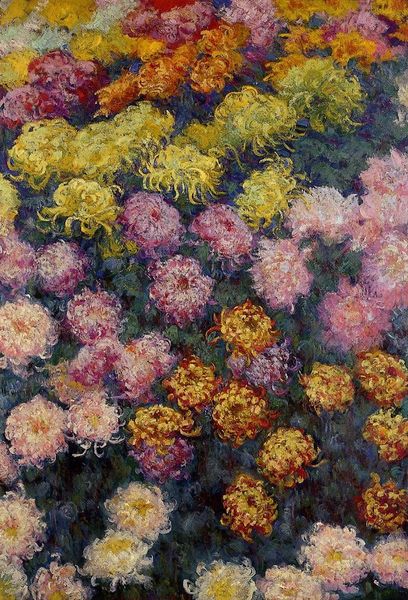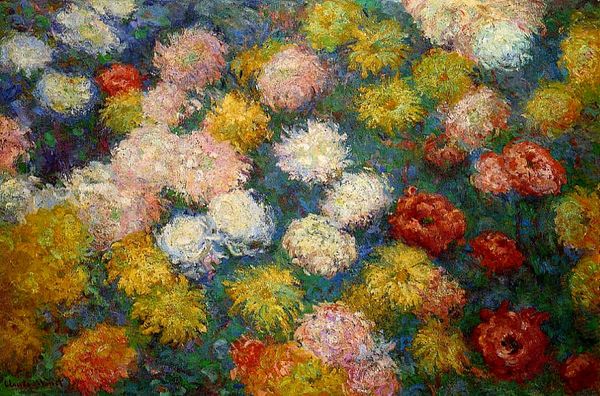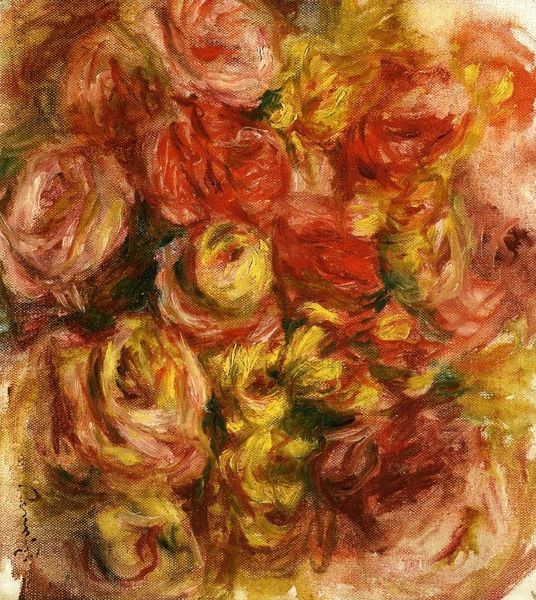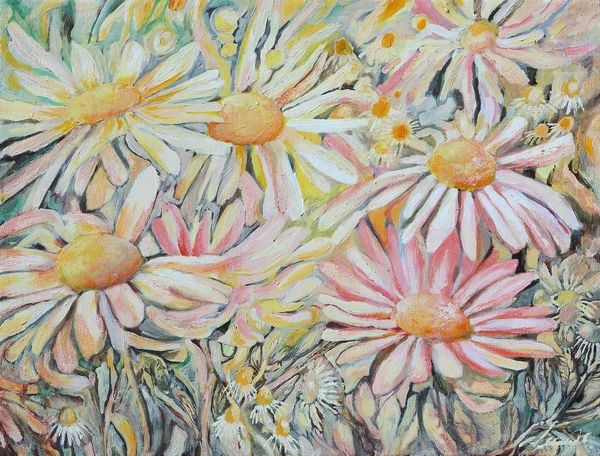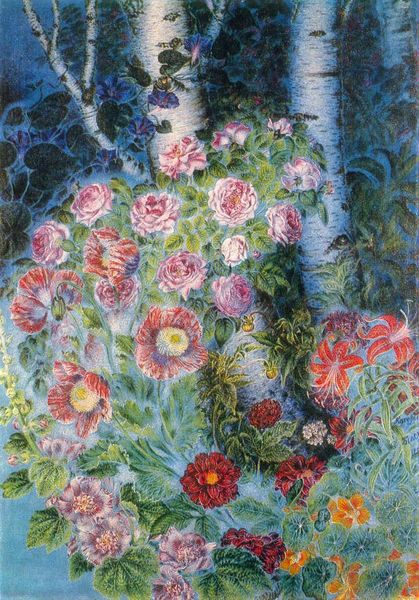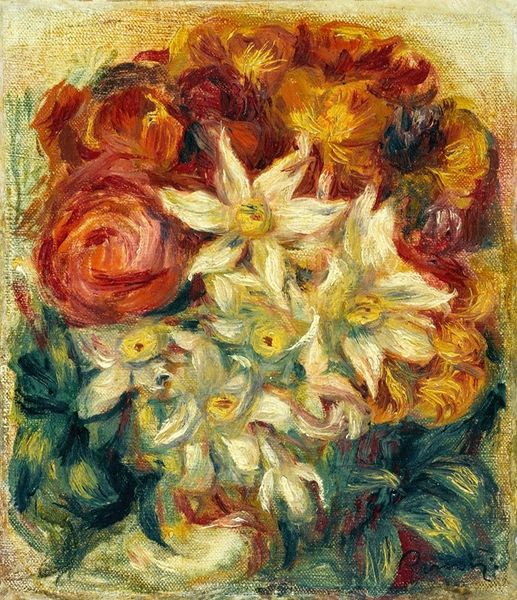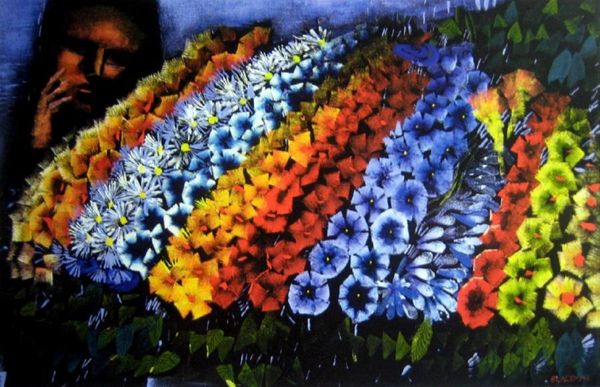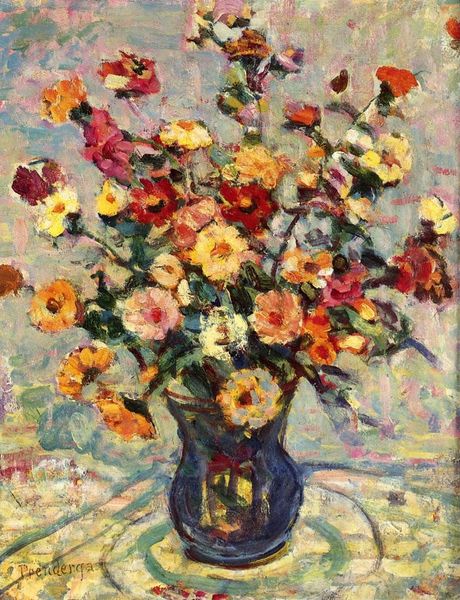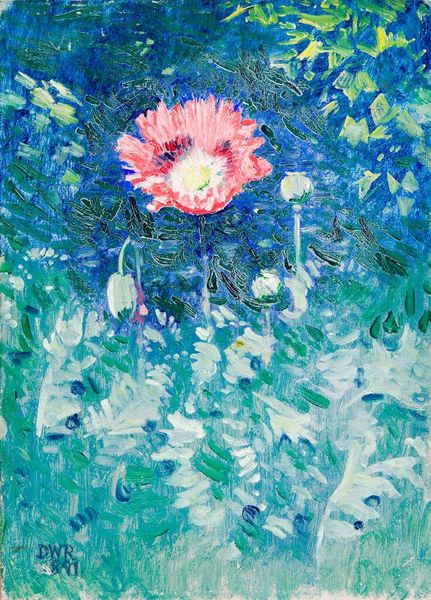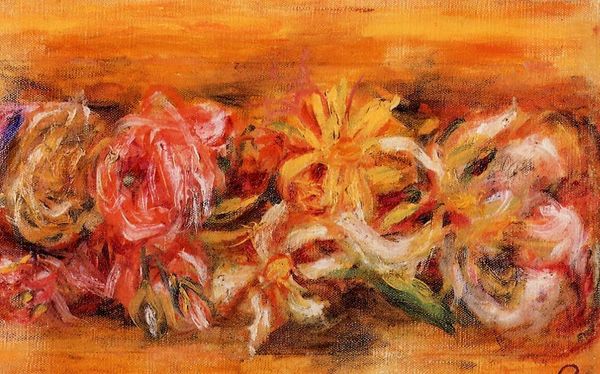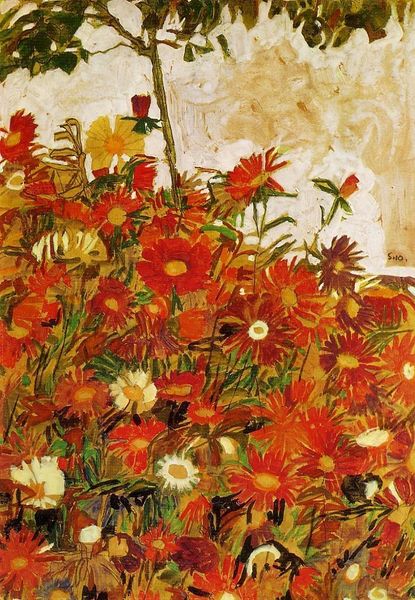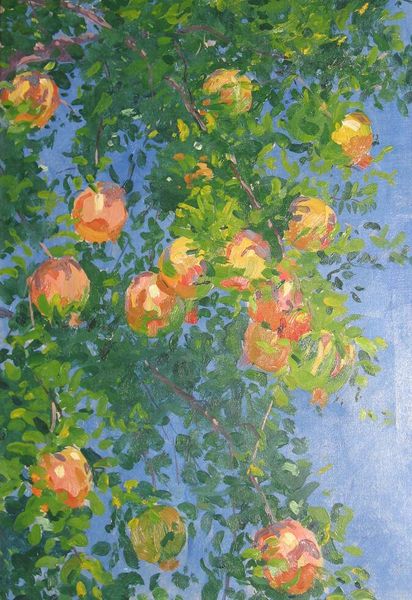
Dimensions: 88.5 x 130.1 cm
Copyright: Public domain
Curator: Monet's "Chrysanthemums", painted in 1897, presents us with a riotous explosion of color. What's your initial reaction to it? Editor: A sensory overload, but in a delightful way. I'm immediately struck by the density of the brushstrokes; it feels almost tactile. Curator: Yes, Monet’s application of oil paint is quite deliberate here. Considering its place within post-Impressionism, one sees a breakdown in academic traditions reflected not just in style but in material usage. We have to understand Monet's engagement with these flowers from his garden, and his labor infusing paint with such texture. It underscores how everyday experiences influenced artistic production and the act of artistic creation itself as labor. Editor: I agree. And how does the broader political landscape of the late 19th century figure in the reception of floral painting like this? Were flower gardens an aspirational symbol of bourgeoise leisure? Did showing masses of colorful chrysanthemums also evoke something about colonialism and trade? These blooms didn’t exactly grow naturally across Europe at that point. Curator: Interesting angles, definitely! Though Monet rarely engaged directly with overt political statements, these aspects still percolated the social consciousness of his era and inevitably influenced interpretation. More broadly speaking, though, the painting serves a purpose in promoting visual culture around nature itself. By emphasizing the sensory experience, these works changed viewers' perceptions in galleries while elevating flower gardening in public and private life. Editor: You’ve prompted me to rethink how floral works played a critical cultural role. Monet, consciously or not, was deeply engaged in shaping a very particular experience of modernity. Curator: Indeed! There's always so much going on below the pretty surface. It shifts how we acknowledge our interactions and dependencies with art objects. Editor: It's tempting to get lost just in that dazzling, immersive brushwork. Food for thought as we engage more with historical images.
Comments
No comments
Be the first to comment and join the conversation on the ultimate creative platform.
